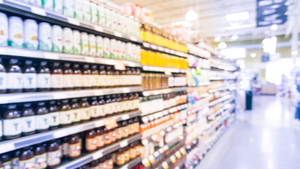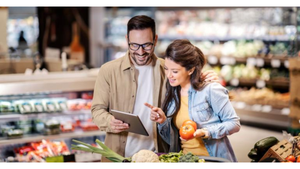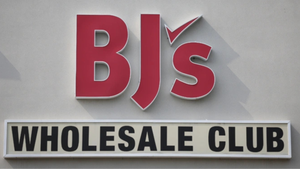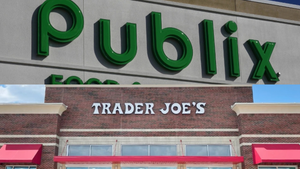Here's 5 things you may have missed in grocery.
5 things: This will be the deciding factor in the Kroger, Albertsons merger5 things: This will be the deciding factor in the Kroger, Albertsons merger
Here’s 5 things you may have missed in grocery
October 18, 2024

I spy…Grocery operators frequently check the websites and promotions of rivals and send managers to walk through the stores of competitors to get a sense of what shoppers will pay for various items. It’s a normal practice, but these tactics have caught the eye of the FTC lawyers seeking to block the looming $20 billion merger between Kroger and Albertsons, the respective largest and second-largest U.S. supermarket chains by sales. The FTC lawyers argue that Kroger won’t have the same incentive to lower prices in its stores without Albertsons. But lawyers for Kroger say that’s exactly why the merger with Albertsons needs to happen—it’s not about beating prices with other grocers, but rather with Walmart—the nontraditional grocery player who beats all others on price. The federal lawsuit against the merger is still pending as of press time…but it sure feels like it’s going to come down to who the government perceives as the “competition” within grocery. —Chloe Riley
The war against shrinkflation: Purse strings have tightened with rising inflation, but consumers have noticed inflation’s newer, evil twin–shrinkflation. Instead of increasing the costs of certain products, companies have taken to selling less for the same price, giving the products a higher cost per ounce and leaving consumers to make multiple return trips to the store as products run out sooner. In a recent study by LendingTree, a third of nearly 100 products that were analyzed have shrunk, with their prices staying the same. With 71% of Americans noticing at least one instance of shrinkflation in the past year and 82% of consumers saying they feel deceived, it’s become a hot topic in the industry. LendingTree found that consumers prefer price bumps to decreasing size, and 80% of Gen Z surveyed said they are less likely to continue to purchase from a brand when they notice shrinkflation. Grocers should get more comfortable with clearly communicated changes in product size so consumers don’t feel duped. —Ally MacConchie
Convenience is trying to pick the pocket of supermarkets and restaurants: The National Association of Convenience Stores (NACS) conference, which was held last week in Las Vegas, has traditionally been about five categories- candy, snacks, beverages (mostly soft drinks and beer, but increasingly energy drinks), tobacco and petroleum. The last several years they have added prepared foods in a big way. Beyond the Hershey’s, Coca-Cola’s, Pepsi’s, Mars’, Philip Morris’ and Budweiser’s, a large chunk of the exhibit floor featured fried chicken (19 vendors), hot dogs (17), Mexican food like tacos and burritos (14), sandwiches (17), soups (8) and, of course, pizza (26). There were even several brands more typically sold at supermarkets like P&G and Kellogg’s. All of this screams out that C-stores aren’t satisfied with their conventional role of selling higher priced items to shoppers on-the-go and want, almost desperately, a bigger basket size that they’re targeting grocery stores and QSRs for. —Ron Margulis
Three very different meals: Ah, yes, the life of a parent with active kids. There is no time for anything, so ordering takeout is usually the way we go…unfortunately. We also find ourselves leaning into last-mile delivery companies like DoorDash, as well as meal solutions options. (Though we found them too expensive.) I just found my online twin, San Francisco Chronicle writer Jessica Roy, who together with three other colleagues did an experiment. Which is best: Buying groceries and making meals at home, ordering from last-mile delivery outlets, or leaning into a meal solutions pick? The price per serving was pretty consistent on all: about $13.50 per person for a meal kit, $30 for delivery, and $5 to $10 per serving to buy the groceries. All three come with a fair amount of packaging and food waste as well. In the end for Roy, meal kits came out on top. Perhaps I need to ride that carousel one more time? —Bill Wilson
AI has even reached the produce industry! Last week at Groceryshop, it was almost a requirement to have AI in your corporate messaging, especially on the show floor. This week at the International Fresh Produce Association show in Atlanta, one of the best attended educational sessions was on the topic and there was a smattering of AI messaging on the show floor, something absent at last year’s event. Sure, attendees this year were only talking about the basic use of AI for customer engagement and supply chain, and, sure, there were a limited number of business use cases or examples of ROI. But at least they were talking about it. Not so sure if the meat and seafood guys’ industries got that memo yet. —Ron Margulis
About the Author
You May Also Like






